The Land Adventure Playground
I drove to Wrexham, Wales on the morning of July 14 to meet Suzanna Law and her friend Andy. The plan was for us to visit three adventure playgrounds: The Land, The Venture, and The Valley. It turned out to be an amazing afternoon. In this post I will attempt to describe what I found at The Land Adventure Playground, which is one of the most child-empowering playgrounds I have ever seen. The Land might be more accurately referred to as a ‘junk playground’ (where I use the word ‘junk’ to refer to the materials present, not in a pejorative, or derogatory sense), and it is the only adventure playground I visited that truly seems to be a living embodiment of the original junk playgrounds that were created in Denmark and England shortly after World War II. The playground is entirely based on the idea of children creating their play out of loose parts, or ‘junk’- pieces of wood, tires, rope, hammers, nails, saws, fabric, netting, or plastic pipes.
In order to fully grasp the beauty of The Land you need to put aside all of your pre-conceptions of what a playground is and what a playground should be. The Land is a living playground, a constantly evolving space that depends completely on the interests, enthusiasms, whims, ideas, inspirations and creative longings of the children who spend time there. There are no fixed play structures such as slides, climbers, etc.- any extant play structures, such as dens, forts, or bridges, have been built by the children themselves with some assistance from the playworkers on site. I saw two amazing dens that had been built by children over varying periods of time, using hammers, nails, saws, boards, planks, bricks, and tires.
It was incredibly inspiring to see a playground that both implicitly and explicitly says to children, “This is your space, make of it what you will- use these tools, use these materials, and create your own world.” As an adult, I couldn’t help but feel a longing to spend more time in such a space of possibility, where what could happen is truly limited only by one’s imagination and access to sufficient materials and tools.
In The Land I saw echoes of what I witnessed during my visits with Kirsty at Scrapstore Playpods, and with Marianne at Play Wales, to elementary schools that provided opportunities for loose parts play during recess periods. At The Land I witnessed a living example of the truth of Simon Nichols’ brilliant thesis, that “in any environment, both the degree of inventiveness and creativity, and the possibility of discovery, are directly proportional to the number and kind of variables in it.”
Before I let you see the photos of The Land, I’ll leave off with a bit more from Simon Nichols, quoted from his article “How Not to Cheat Children: The Theory of Loose Parts”, written way back in 1971, originally published in Landscape Architecture:
“Creativity is for the gifted few: the rest of us are compelled to live in environments constructed by the gifted few, listen to the gifted few’s music, use the gifted few’s inventions and art, and read the poems, fantasies and plays by the gifted few.
This is what our education and culture conditions us to believe, and this a culturally induced and perpetuated lie.
Building upon this lie, the dominant cultural elite tell us that the planning, design, and building of any part of the environment is so difficult and so special that only the gifted few- those with degrees and certificates in planning, engineering, architecture, art, education, behavioural psychology and so on- can properly solve environmental problems.
The result is that the vast majority of people are not allowed (and worse- feel that they are incompetent) to experiment with the components of building and construction, whether in environmental studies, the abstract arts, literature, or science: the creativity- the playing around with the components and variables of the world in order to make experiments and discover new things and form new concepts- has been explicitly stated as the domain of the creative few, and the rest of the community has been deprived of a crucial part of their lives and life-styles. This is particularly true of young children who find the world incredibly restricted- a world where they cannot play with building and making things, or play with fluids, water, fire, or living objects, and all the things that satisfy one’s curiosity and give us the pleasure that results from discovery and invention.
The simple facts are these: 1) There is no evidence, except in special cases of mental disability, that some young babies are born creative and inventive, and others are not. 2) There is evidence that all children love to interact with variables, such as materials and shapes; smells and other physical phenomena, such as electricity, magnetism, and gravity; media such as gases and fluids; sounds, music, and motion; chemical interactions, cooking and fire; and other people, and animals, plants, words, concepts and ideas. With all these things all children love to play, experiment, discover, invent and have fun.
It does not require much imagination to realise that most environments that do not work (ie., do not work in terms of human interaction and involvement in the sense described) such as schools, playgrounds, hospitals, daycare centers, international airports, art galleries, and museums, do not do so because they do not meet the ‘loose parts’ requirements: instead they are clean, static, and impossible to play around with. What has happened is adults in the form of professional artists, architects, landscape architects and planners have had all the fun playing with their own materials, concepts and planning-alternatives, and then builders have had all the fun building the environments out of real materials; and thus has all the fun and creativity been stolen; children and adults and the community have been grossly cheated and the educational-cultural system makes sure that they hold the belief that this is right.”
Here, without further ado, is The Land. One caveat- the only child you will see in these photographs is my son Daniel, as Claire, who runs the playground, requested that I not photograph any of the other children present.
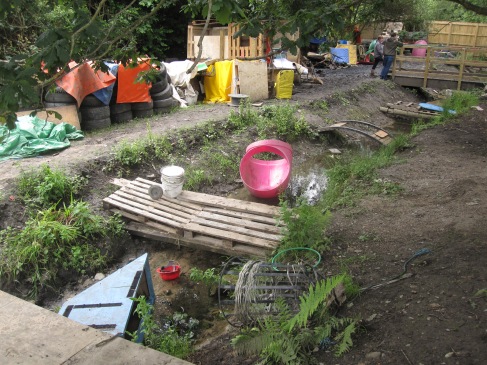
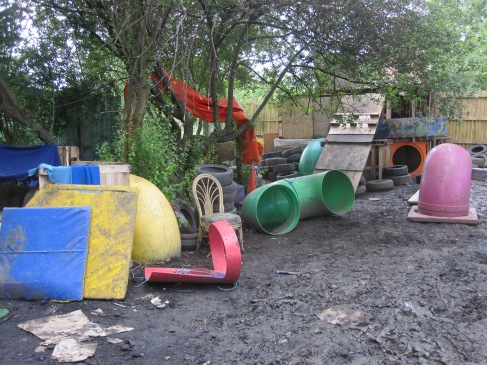
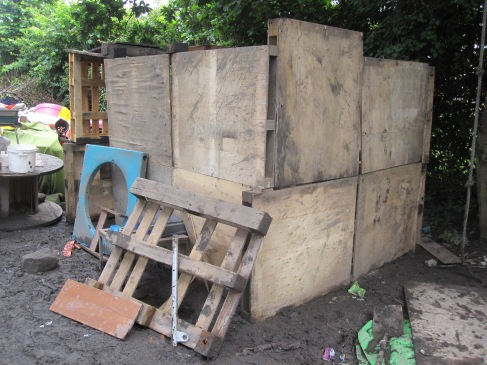
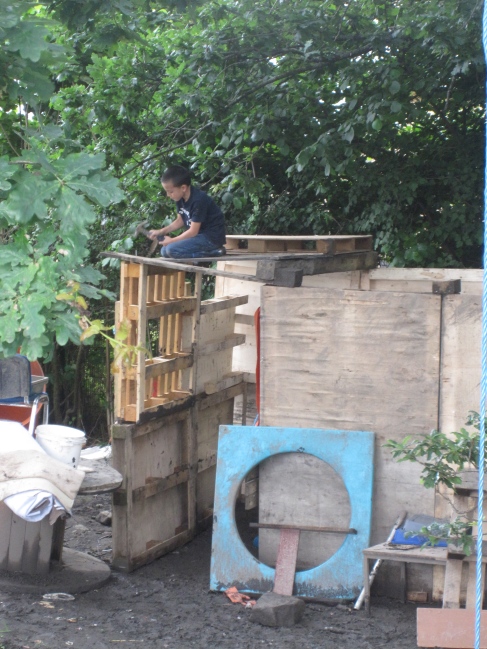
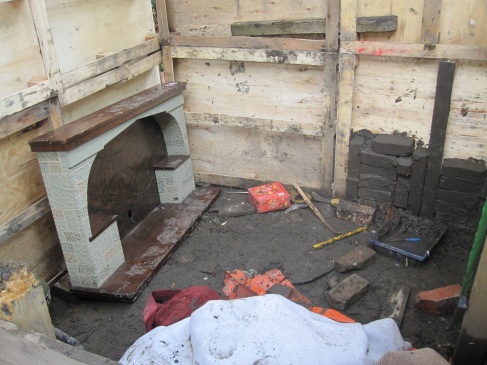
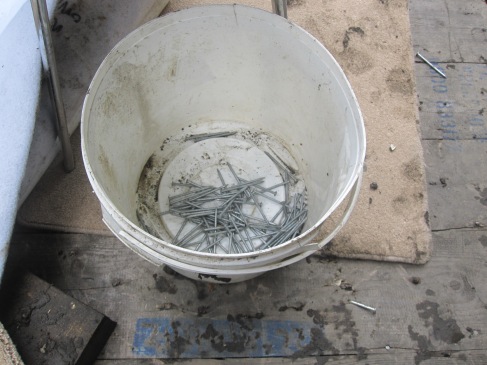
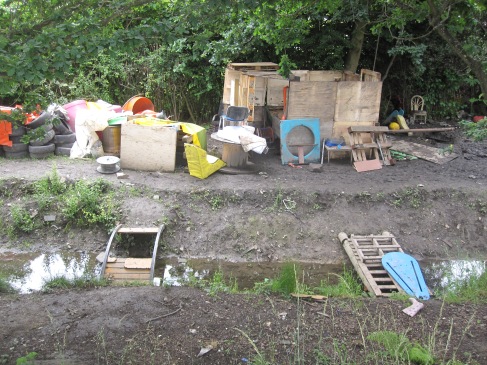
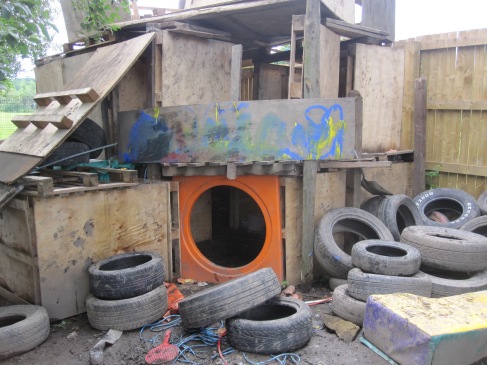
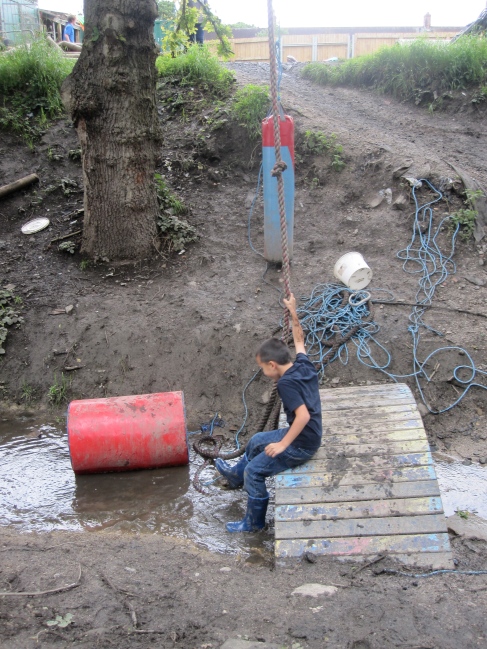
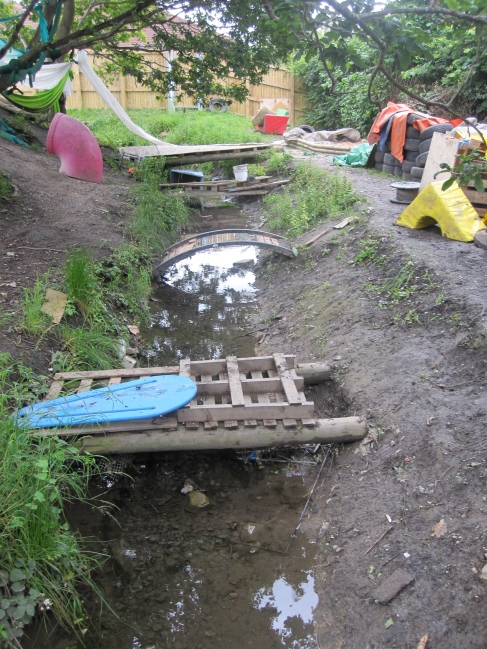
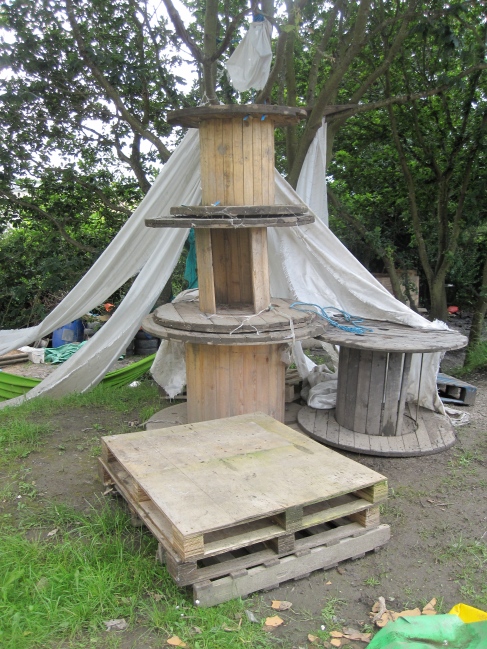
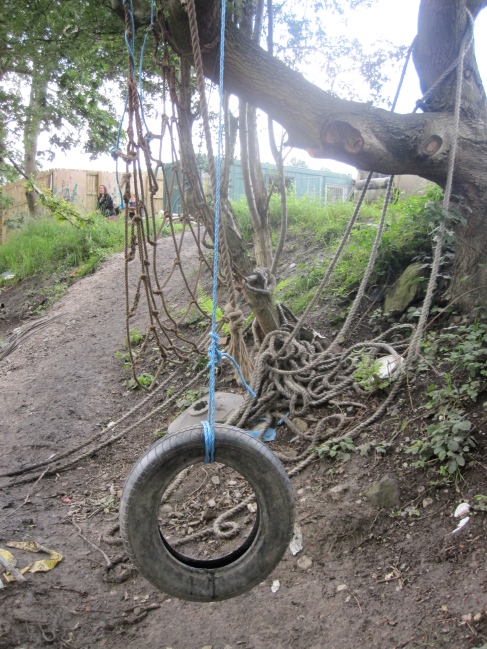
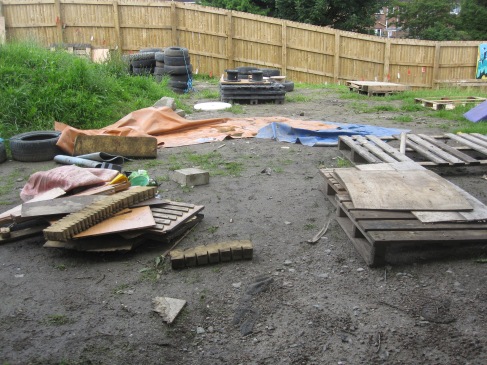
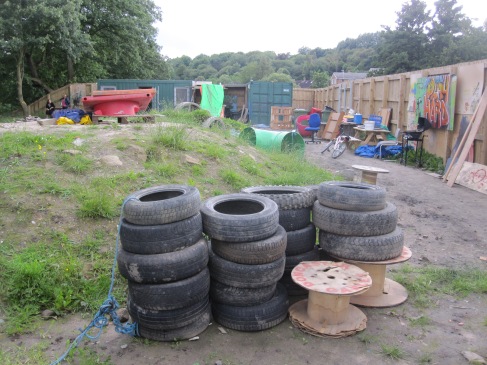
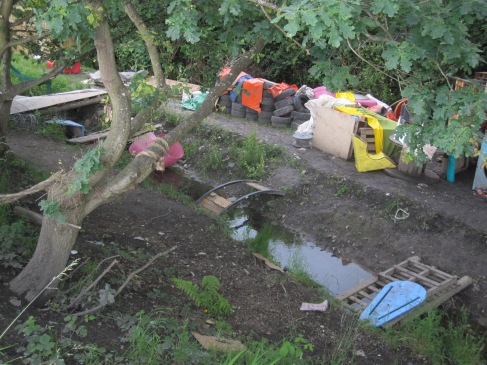
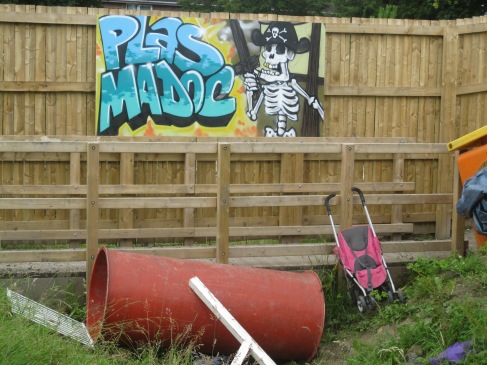
Hello and thanks for a fabulous peek at port madoc . Talk about this place all the time on training but never been myself just read about it . Please could I use your blog with students it would be so useful .
I’m trying to find out more about how playgrounds like this are funded, supported, and function. What are the rules, is it private or public, how are lawsuits avoided? Is there a city site with info on the actual park you can pass on? I’m in the US looking to start something like this but I doubt it will fly here in the good ole USofA. Love it!
Hi,
Thanks for visiting the blog! I would recommend that you check out the Facebook page/ group “American Association of Adventure Playgrounds”. This is a group of folks working on creating and operating adventure playgrounds here in the US. One of the leaders of the group is Rusty Keeler in Ithaca, NY, who has been running The Anarchy Zone adventure playground in Ithaca for several years. He has a lot of info. that would probably be useful to you. I do not know of any website or web presence for The Land adventure playground in Wales. However, if you connect with the American Association of Adventure Playgrounds Facebook group you can get in touch with Erin Davis from Vermont who is finishing a documentary on The Land.
Actually, you might be able to get in touch with folks at The Land directly via Facebook through the user “Play on Plas Madoc”. Just search for them on Facebook.
Where are you located, and what is your background?
All the best,
David.